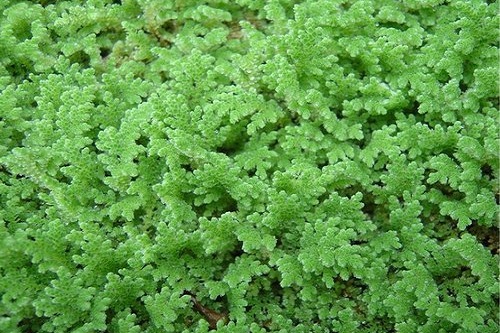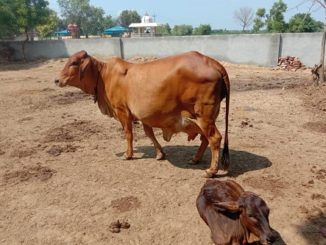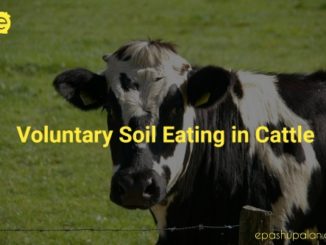Introduction
Agriculture including the livestock as an integral component plays an important role in Indian economy. Livestock rearing is a key livelihood and risk mitigation strategy, especially for small and marginal farmers in the rain-fed regions of the country. The total livestock population is 535.78 million in the country reflected an increase of 4.6% over livestock census 2012. The production of milk has significantly increased over the last few decades, and India has emerged as the biggest milk producer in the world (187.7 million tons in 2018-19) since the last 20 years. The livestock’s growth and development is conditioned by the adequate availability of feed and fodder. India is facing an extreme animal feed shortage, which is a “major factor” behind the recent rise in costs of milk production.
The availability of feed and fodder remains a major area of concern; there is a gap between its demand and supply in the country. As per the estimates of the Indian Council for Agricultural Research (ICAR)-affiliated National Institute of Animal Nutrition and Physiology (NIANP), the deficit in the requirement and the availability of dry fodder, green fodder and concentrates to increase to 23 per cent, 40 per cent, and 38 per cent, respectively, by 2025. The fodder deficit in India in terms of green fodder, dry fodder, and concentrates was 26 million tons (MT), 21 MT, and 34 MT in 2015, which is expected to reach 40 MT, 21 MT, and 38 MT by 2025, respectively. DAHD officials acknowledge that there is a need to adopt the practice of land use with multiple crops in a sustainable manner. Adopting silvi-pastoral and horti-pastoral models suitable to the area could help in substantially enhancing the availability of forage for the livestock. Finance minister Nirmala Sitharaman, in her union budget (2020-21), had stated that the Mahatma Gandhi National Rural Employment Guarantee Scheme (MGNREGS) ‘would be dovetailed to develop fodder farms.
Azolla is a small floating fern also known as duck weed is genus of seven species of aquatic ferns belongs to the family Salviniaceae. The fern Azolla, hosts a symbiotic blue green algae Anabaena azollae, which is responsible for the fixation and assimilation of atmospheric nitrogen. Due to ease of cultivation, high productivity and good nutritive value it is used as a beneficial fodder supplement by various researchers (Singh & Subudhi, 1978; Prabina & Kumar, 2010).

Galaxy of Nutrients in Azolla
Azolla contains a galaxy of nutrients such as proteins, minerals, vitamins, growth promoter etc. Azolla, on a dry weight basis, is constituted of 25-35% protein content (all essential amino acid especially lysine), 10-15% mineral content, vitamin A, vitamin B12, beta Carotene and 7-10%, bio-active substances and biopolymers. Carbohydrate and oil content in Azolla is very low. Thus the bio-composition of Azolla, makes it one of the most economic and efficient feed substitutes for livestock. Moreover, Azolla can be easily digested by livestock, owing to its high protein and low lignin content. Azolla was found to be a very nutritive and cheap organic feed substitute for dairy cattle and can be used as unconventional feed with protein supplement for many species like poultry, duck, pigs and fish (Hossiny et al., 2008).
Azolla and Ruminants
In India, farmers’ having insufficient lands for fodder production thus they have started cultivating Azolla as cost of production is low with better output. Dairy farmers have also started adopting this low-cost production technology and it is believed that this technology will be taken-up more widely by dairy farmers, in particular those with insufficient land for fodder production. Azolla increases the milk yield in cattle and feed conversion ratio. Reduced intake, increased digestibility and more body weight gain was reported in crossbred heifers. Use of Azolla as a feed substitute nearly saved 20-25 % of cost feeding for concentrate mixtures. Fresh azolla can be mixed with commercial feed in the ratio 1:1 or given directly to livestock. It was found that the milk production in cattle increased by 10-12% when they were fed with azolla. It is also found that azolla feeding improve the quality of milk. Azolla pinnata tried as a feed for goats (Samanta & Tamang, 1993) and buffalo calves (Indira et al., 2009).
Azolla and Non-Ruminants
Azolla as a feed resource for fish, swine and poultry had been tested with significant positive results (Ara et al., 2015). Azolla is a potential feed ingredient for chickens. Studies in India as early as in 1978 concluded that fresh Azolla could replace 20 % of commercial feed in diets of growing chickens (Singh and Subudhi, 1978). Water plants do not accumulate any plant secondary compounds due to their growth pattern and habit. Therefore, water plants such as Azolla have greater prospects as a protein substitute for non-ruminants as compared to the tree leaves which contents one or more anti-nutritional factors.
In Pig, Azolla is a good source of minerals and essential amino acids for pigs but reported to be low in digestible energy for growing pigs. (Leterme et al., 2009).
In Duck, Azolla can replace 20 % of CP of soybeans in diets of ducks without any adverse effect on growth and health. Feed conversion ratio was also better and net profit was reported to be highest in Azolla fed ducks. Cost of feed per kg gain was lowest and net profit per bird highest for this treatment. However, at levels of replacement above this, rate of gain and feed conversion efficiency were significantly poorer (Becerra et al., 1995).
In Broiler, the better results were observed at 10 and 15 % of replacement by Azolla on growth performance of broilers (Cambel 1984). Improved performance of broilers was reported when Azolla meal was added at the rate of 5 % dry matter which is established as a safe.
In layers, egg production is increased while in broilers body weight is improved fed on Azolla supplemented diets. Azolla supply vitamins as well as minerals to the ducks and chickens which are of added advantage as in rural areas as mineral mixtures are rarely used or are expensive to be used in diet.
Furthermore, it was also tried as a protein supplement for Rabbits (Sreemannaryana et al., 1993; Abdella et al.,1998; Sadek et al., 2010).
Benefits of Azolla
There are numerous benefits of Azolla which are useful to the aquatic environment in many ways. Some of the benefits are as:
- Low input cost. This is easy to grow in wild and also can grow under controlled condition at farm.
- Within short period of time it can easily be produced a large quantity as green manure required in both Kharif as well as Rabi season.
- It can fix atmospheric nitrogen and CO2 to form carbohydrates and ammonia, respectively, and after decomposition it adds available nitrogen for crop uptake and organic carbon content to the soil.
- The oxygen released due to oxygenic photosynthesis, helps the respiration of root system of the crops as well as other soil microorganisms.
- It makes Zn, Fe and Mn to soluble form and incorporates to the crops such as paddy.
- Azolla suppresses tender weeds such as Chara (water fern) and Nitella (stonewort) in a paddy field. Azolla releases plant growth regulators and vitamins which enhance the growth of the rice plant. A potential bio-fertilizer Azolla can be substituted for chemical nitrogenous fertilizers to a certain extent (20 kg/ha) and it increases the crop yield and quality and thus reduced cost of production.
- It increases the utilization efficiency of chemical fertilizers, if any used. It reduces evaporation rate from the irrigated rice field.
- It is a food source for waterfowl, fish, shrimp, insects, worms, snails, crustaceans etc. and provides habitat to them.
- Mats of Azolla can actually discourage blue-green algal blooms. They restrict the penetration of sunlight into the water, which is essential for algal growth and take up nutrients from the water, limiting the availability of this food source for the algae.
Conclusion
Azolla has a potential as a promising and economical feed for different species of animals containing substantial amounts of protein, amino acids, vitamins and minerals which significantly reduce the cost of feeding. Combination of Azolla with some agricultural byproducts such as wheat bran and rice bran can improve the digestibility and feed quality and thus production performance of animals.
References
- S, Adil S, Banday MT and Khan MA (2015). Feeding potential of aquatic fern-azolla in broiler chicken ration. Journal of Poultry Science and Technology, 3(1): 15- 19.
- DAHD&F. 2017-18: 19th livestock census, Department of Animal Husbandry, Dairying and Fisheries, Ministry of Agriculture, Govt. of India.
- Hossiny H, Setoudeh M, Rokni H, Dehghanzadeh H, Cheraghcheshm M (2008). Using of silage azollain Guilan male calves nutrition. Proceedings of Third National Congress of Recycling and Reuse of Reneweable Organic Resources in Agriculture Islamic Azad University, Khorasgan branch (Isfshan) Agricultural faculty, waste and water research
- IGFRI Vision, 2050: Indian Grassland and Fodder Research Institute, Jhansi (UP).
- Pillai KP, Premalatha S and Rajamony S (2002). Azolla-A sustainable feed substitute for LEISA INDIA, 4: 15-17.
- Prabina BJ, Kumar K (2010) DriedAzolla as a nutritionally rich cost effective and immuno- modulatory feed supplement for broilers. The Asian Journal of Animal Science 5: 20-22.
- Prasanna SB, Shivakumar MC, Umashankar BC, Naveen Kumar GS, Pardeep MC, Prabhu TM (2011) Influence of feeding azolla on the performance of RAJA-2 Broiler Birds. Indian Journal Animal Production Management 27: 137-141.
- Singh YP (1980). Feasibility, nutritive value and economics of Azolla anabaena as an animal M.Sc. Thesis submitted to the G.B. Pant University, Pantnagar, Uttar Pradesh, India.
- Subudhi BPR, Singh PK (1978) Nutritive value of the Water Fern Azolla pinnata for chicks. Poultry Science 57: 378-380.






Be the first to comment